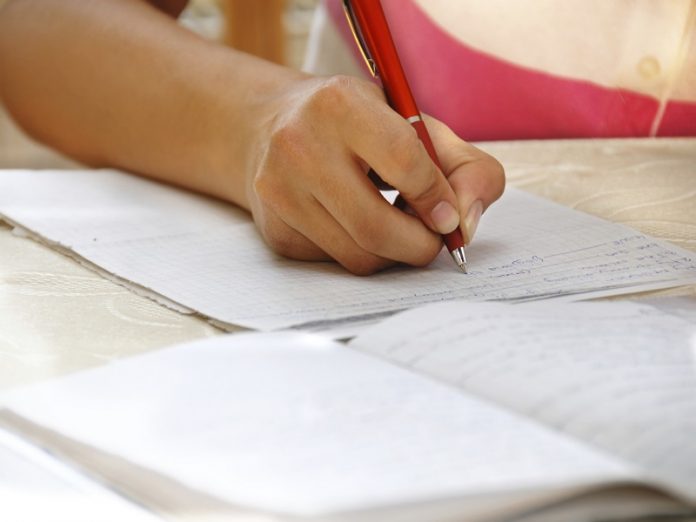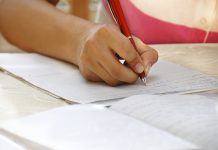IBPS PO Prelims Reasoning- Memory Based Question
Dear Friends,
As IBPS has successfully conducted Prelims Exam.We are here with the Memory based questions of the Reasoning section.
Directions (1-5): Study the information and answer the following questions:
In a certain code language
Get details for venue — fe wi mo rs
Venue book required details — rs gt rd wi
Details required book guest — wi gt rd ra
Guest get more venue —- ra fe gk rs
Q1. What is the code for ‘details’ in the given code language?
(a) fe
(b) mo
(c) wi
(d) ra
(e) None of these
Q2. What is the code for the word ‘guest venue’ in the given code language?
(a) gt gk
(b) fe mo
(c) rs ra
(d) gt ra
(e) None of these
Q3. What is the code for the word ‘get’ in the given code language?
(a) gt
(b) fe
(c) rs
(d) rd
(e) None of these
Q4. If the code for the words ‘for _____’ is coded as ‘mo gk ’ in the coded language then what will be
the missing word?
(a) book
(b) required
(c) guest
(d) more
(e) either (a) or (d)
Q5. What is the code for ‘book’ in the given code language?
(a) rs
(b) gt
(c) rd
(d) kl
(e) either (b) or (c)
Solutions (1-5):
Words Code
Venue rs
Details wi
Get fe
For mo
Guest ra
book/ required gt/rd
More gk
S1. Ans.(c)
S2. Ans.(c)
S3. Ans.(b)
S4. Ans.(d)
S5. Ans.(e)
Directions (6-10): Study the information and answer the following questions:
Eight persons K, L, M, N, O, P, Q and R sitting in a row. Some of them are facing north while some are facing south. N sits fifth to the right of M but none of them sits at an extreme end. Q sits third to the right of N. L sits second to the right of Q. Only one person sit between L and P. R sits third to the left of P. K sits second to the left of O. Both the person sitting at extreme ends faces opposite direction to each other. Both the immediate neighbours of M faces same direction. R sits to the left of L and both of them are facing opposite direction to each other. R does not face north direction.
Q6. Who among the following sits third to the right of R?
(a) Q
(b) K
(c) M
(d) N
(e) None of these
Q7. Which among the following pair sit at the end of the row?
(a) Q, L
(b) R, K
(c) O, P
(d) L, R
(e) None of these
Q8. How many persons sits to the right of K?
(a) Two
(b) More than Three
(c) Three
(d) One
(e) None of these
Q9. Who among the following sits second to the right of Q?
(a) L
(b) N
(c) M
(d) O
(e) None of these
Q10. Four of the following are alike in a certain way so form a group, which of the following does not belong to that group?
(a) K
(b) N
(c) R
(d) O
(e) P
S6. Ans.(c)
S7. Ans.(c)
S8. Ans.(a)
S9. Ans.(a)
S10. Ans.(e)
Directions (11-15): Study the following information carefully and answer the given questions:
Seven persons E, F, G, H, S, T and U buys seven different items viz. Tie, Coat, Ring, Nail paint, Shirt, Diary and Goggles on different days. One person buys one item in a day.
Four person buys items between E and the one who buys Tie. The one who buys coat buys immediately after the one who buys Tie. Two persons buys items between H and the one who buys Tie. T buys immediately after H. F buys his item immediately after the one who buys Diary. Two person buys items between the one who buys coat and the one who buys Shirt. S buys Ring. Goggles was bought immediately after E. Two person buys item between the one who buys Ring and the one who buys Diary. U buys his item before G.
Q11. Who among the following buys Nail paint?
(a) U
(b) G
(c) H
(d) T
(e) None of These
Q12. Which item was bought immediately after Shirt?
(a) Diary
(b) Goggles
(c) Tie
(d) Coat
(e) None of These
Q13. How many persons buys items between S and F?
(a) One
(b) Two
(c) Three
(d) Four
(e) None of These
Q14. Which of the following combination is true?
(a) G- Tie
(b) H- Dairy
(c) T- Goggles
(d) E- Dairy
(e) None is true
Q15. Who among the following buys item immediately before Ring?
(a) U
(b) G
(c) H
(d) T
(e) None of These
Solutions (11-15):
U Tie
G Coat
S Ring
H Nail paint
T Shirt
E Diary
F Goggles
S11. Ans.(c)
S12. Ans.(a)
S13. Ans.(c)
S14. Ans.(d)
S15. Ans.(b)






















